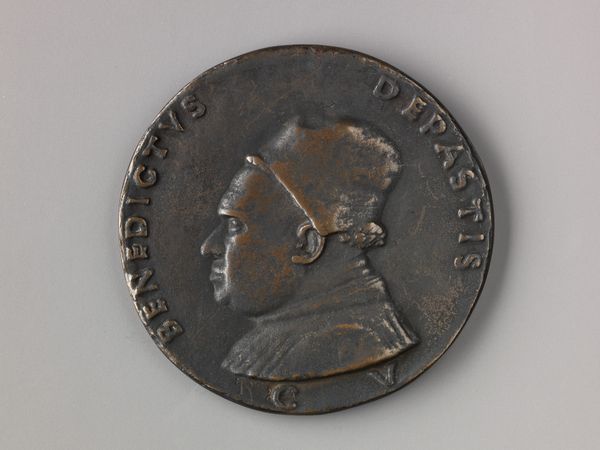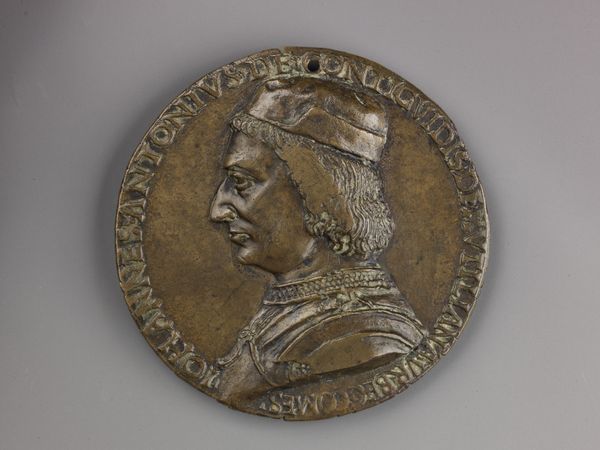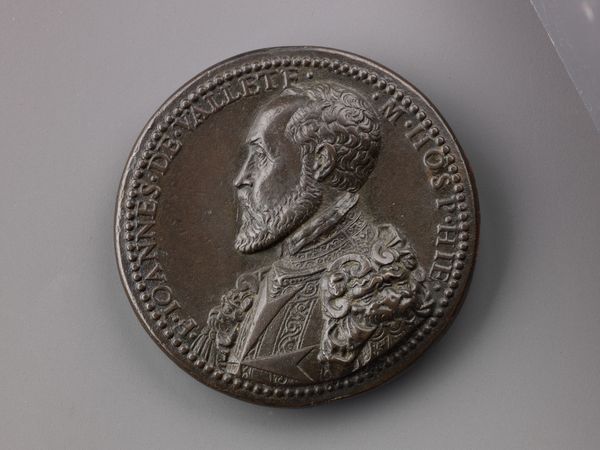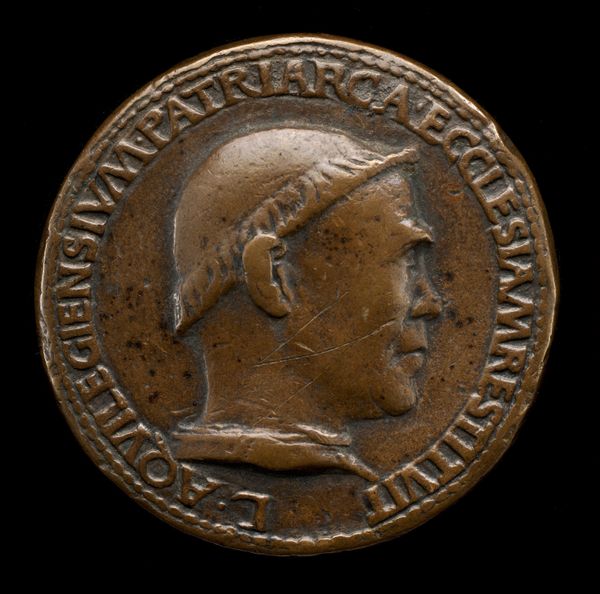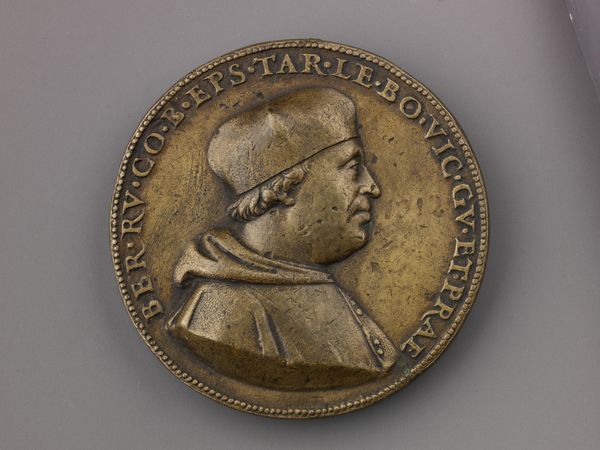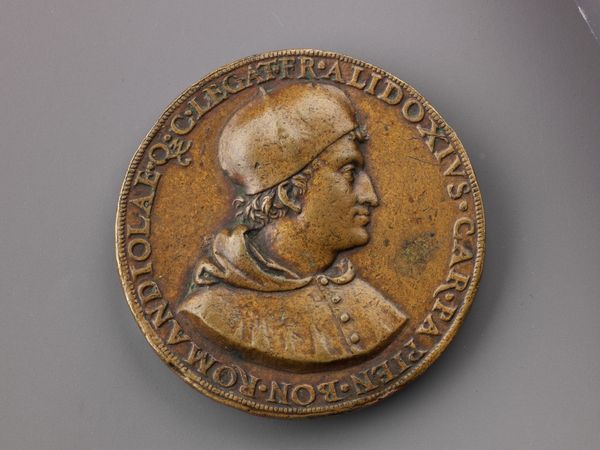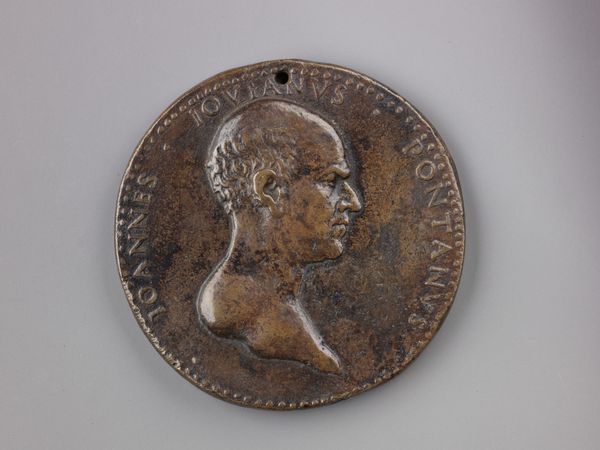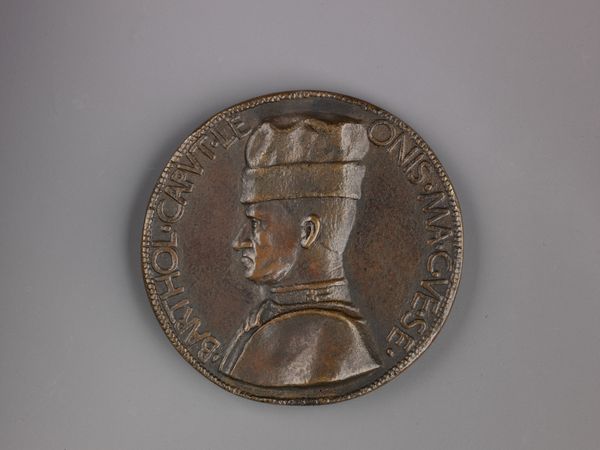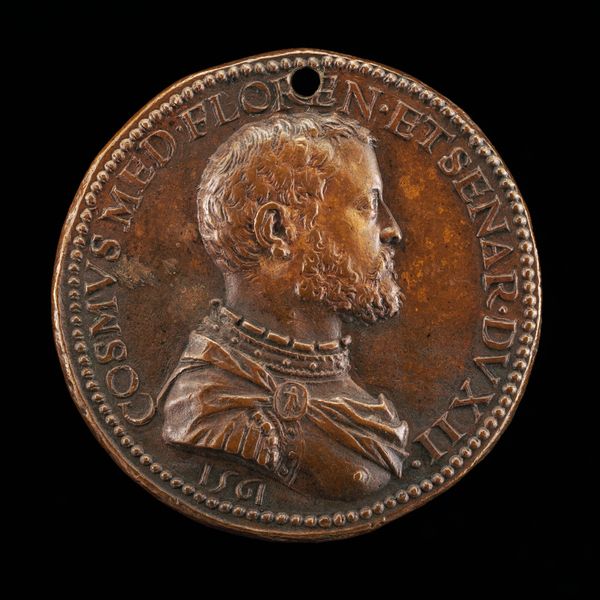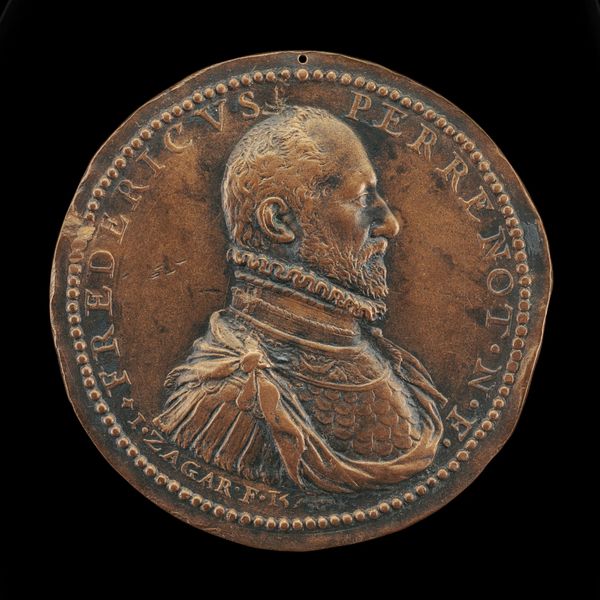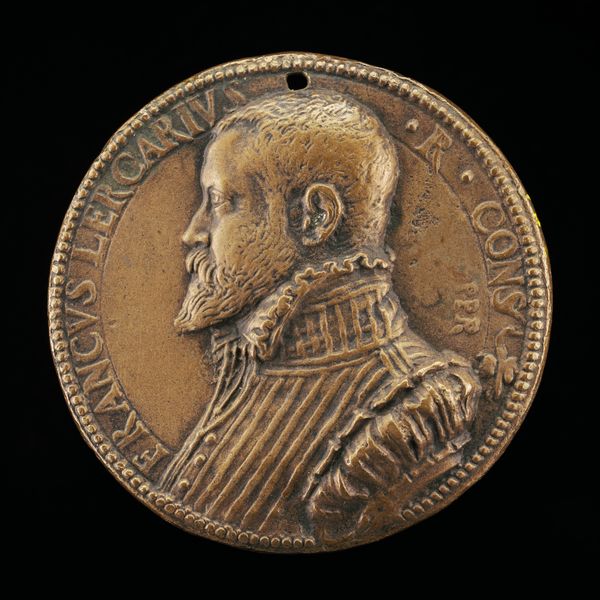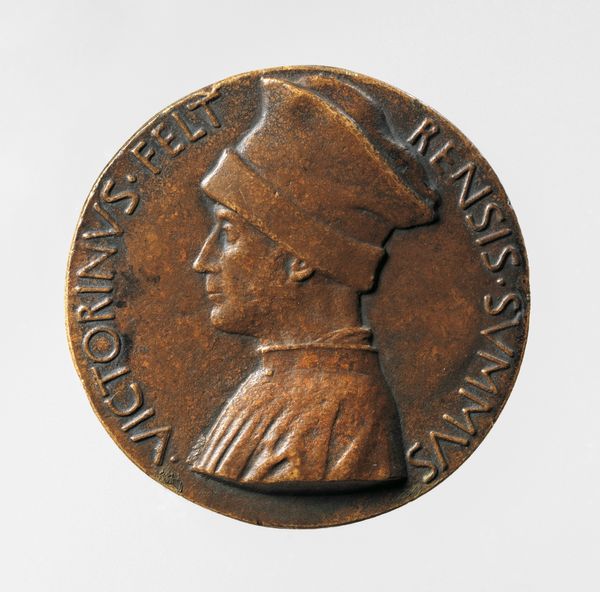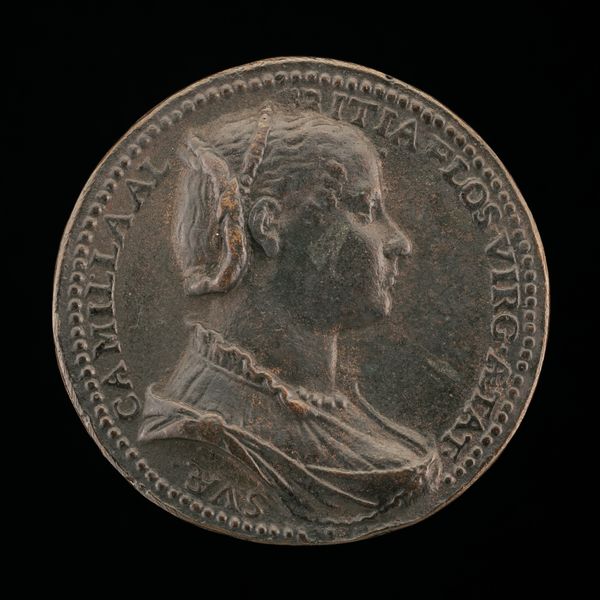
bronze
#
portrait
#
medal
#
sculpture
#
bronze
#
11_renaissance
Dimensions: Diam. 4.5 cm, wt. 36.21 g.
Copyright: Public Domain
Curator: Looking at this Renaissance bronze, one senses immediately the ambition inherent in portraiture. It's titled "Medal: Bust of Marco Sicco" by Antonio Abondio, and was created between 1557 and 1563. You can find this little jewel at The Metropolitan Museum of Art. Editor: Immediately, I notice the cool reserve; his eyes are averted and he is facing forward. The metallic gleam hints at authority, even a calculated distance. What does Marco Sicco represent at that particular point of history? Curator: He was an important canon, linked to royalty. But the fascinating aspect lies in how Abondio, as an artist, uses this format of a medal to connect with classical ideals, like ancient Roman coins featuring emperors. We get both, individual likeness, and the assertion of a noble lineage through visual and textual clues on its surface. It served, undoubtedly, a potent function of asserting identity and influence in a competitive world. Editor: And what powerful symbolism indeed! Casting in bronze alone announces a level of investment and permanence. Its circular form encloses Sicco within its circumference as a representation of power and his controlled universe, but also hints, like a halo, to concepts of saintly representation, don't you agree? This overlap of portrait and sacred art is powerful and interesting. Curator: That’s insightful, framing the object within those symbolic frameworks reveals nuances that transcend simple commemoration. The way Abondio captures the rigid collar of Sicco’s attire contrasts so vividly with the soft modeling of his face, adding a visual richness. The cultural memory speaks across centuries through skillful depiction. Editor: These early medallions often doubled as status statements and sophisticated propaganda! The sitter probably approved every step of production in this particular work, which really exemplifies the controlled visual messaging of the era. Reflecting on it, the art becomes less about him as an individual but also about the cultural mechanisms in which people with status wanted to communicate with society. Curator: Absolutely. Studying “Medal: Bust of Marco Sicco,” we see not only artistic accomplishment, but a window into how identity, authority and cultural values were shaped through Renaissance art. Editor: Indeed, It reminds us that objects can tell stories that are complex and deeply woven into the fabric of the culture from which they emerge.
Comments
No comments
Be the first to comment and join the conversation on the ultimate creative platform.
